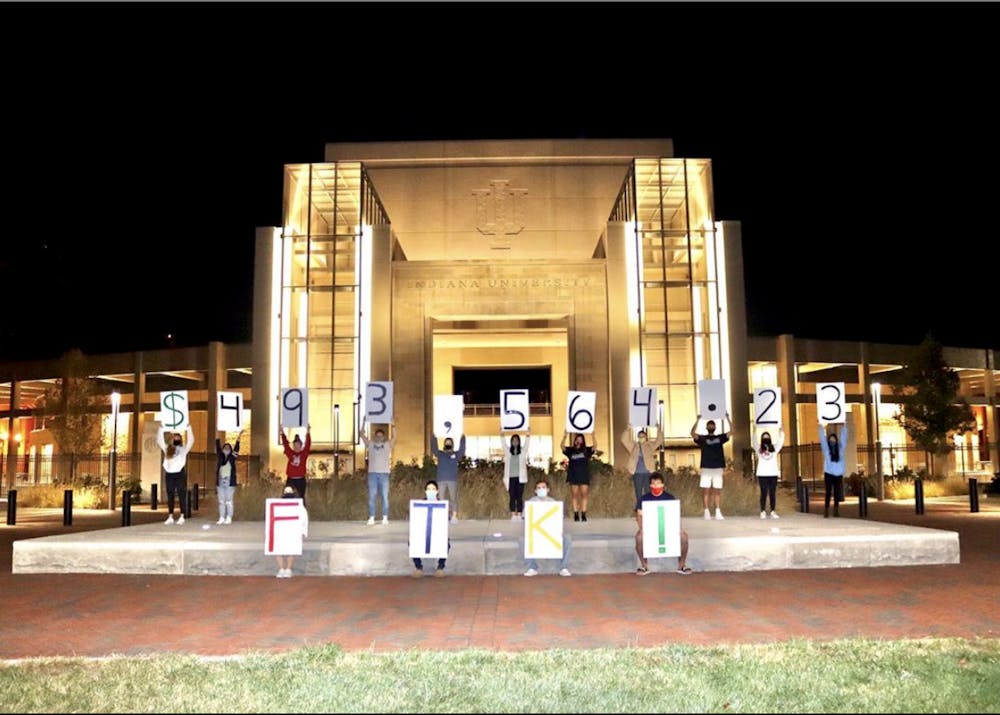IU Dance Marathon’s Day of Hope was held virtually this year from midnight Sept. 24 to midnight Sept. 25. Participants raised $493,564.23 this year, all through donations and funds raised by committee members, greek life dancers and other student participants.
“Day of Hope is the biggest fundraising day for all of IUDM,” said Liam Moore, a junior on the IUDM Morale committee. “Think of it like the Super Bowl, while the marathon itself is the postgame celebration.”
Day of Hope, which started in 2016, serves as a way for students and committee members to raise money for Riley Hospital for Children in Indianapolis and to get excited about the dance marathon in November. Senior Ella Garrison, fundraising chair for the Hospital Relations committee, said one aspect of the “hype” is that Day of Hope is inclusive of everyone.
“It’s really just a really hype day for us to get ready for the marathon, and it’s really fun because even dancers and greek life, freshman, and other clubs participate in it,” she said. “It’s not just committees.”
While Day of Hope is normally held all day in person around campus, because of the coronavirus it was forced to go online this year. Zoom calls and livestreams replaced physical group meetings and celebration, and some of the major aspects were changed to work for an online environment.
The “Hype Room,” Alumni Hall in the Indiana Memorial Union, is typically the hub for Day of Hope activities. Olivia Hempleman, a senior on the Special Events committee, said when people walked into the room in previous years, they would “explode with happiness.”
Committee members found new ways to work toward their fundraising goals.
“Our committee has had Zoom meetings throughout the day, and we’ve done little trivia games and little dollar games just to kind of build our culture throughout the day,” Garrison said.
Hempleman said while people weren’t together, it still felt connected.
“It was very split up, but it was honestly so united and super awesome because we still all were able to come together,” she said.
One of the biggest and most symbolic parts of Day of Hope is the bell ringing. Normally, for each $100 raised during the event the fundraiser would go up on stage in the Hype Room and ring a bell, reminiscent of the bell cancer patients ring after they finish treatment. While attendees couldn’t ring the Hype Room bell this year, they found creative alternatives.
“We encouraged people to send in videos of them ringing either a bell at home or just making noise in the Zoom call,” Garrison said. “We had a bell graphic today to kind of represent that part of the marathon, and it was filled with little small donations, so once you got one of those donations you got to check it off the bell.”
Social media played a large role in Day of Hope as well. IUDM posted hourly challenges on Instagram periodically throughout the day, such as the “Early Bird Challenge,” where every donation received between 7 a.m.- 8 a.m. entered the donor into a raffle to win a bowling shirt, and the “Family Hour Challenge,” which encouraged people to reach out to relatives for donations. There was also “Alumni Hour,” sponsored by the IUDM Alumni 30th Anniversary Planning Committee. The committee matched all donations made by alumni during this hour, up to a total of $6,500.
Livestreams were hosted along with scavenger hunts that could be done virtually or individually. IUDM posted updates and a “Dine and Donate” schedule on its Instagram story, and student posts and advertisements pertaining to Day of Hope were shared.
IUDM’s 2020 motto is “Built by Legacy, Uniting for Purpose.” Despite not having the opportunity to have an in-person experience, Moore said the lack of human interaction was the only real difference he felt from years past, and that the relationships and sense of community helped keep members going.
“Whether it be Zoom or in person with masks, we’re still the same enthusiastic and energetic goofballs dedicated to making a difference,” he said.
Hempleman said Day of Hope was not only a motivation to raise money, but also a way to show the effect participating can have.
“It made me really aware that there are people who come into this world and aren’t super healthy, and it kind of just makes you realize how privileged you actually are,” she said. “It’s like, I have the privilege to be healthy, so you also have to help others who didn’t get the privilege or the right, you know?”




